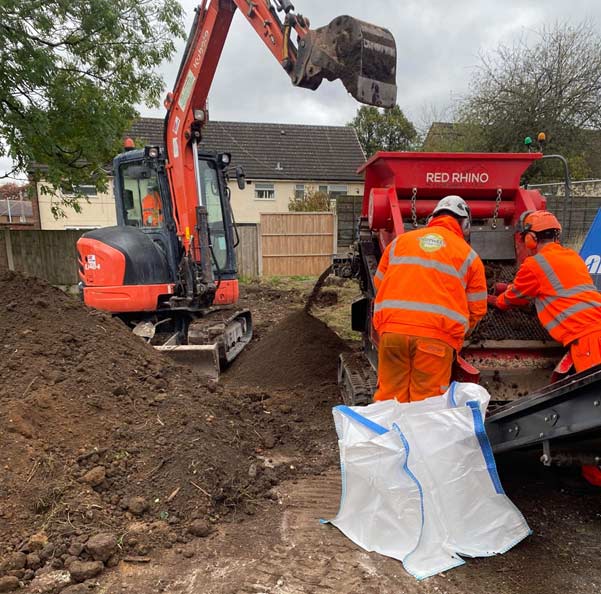JAPANESE KNOTWEED REMOVAL Huddersfield
8
LIVE KNOTWEED JOBS IN Huddersfield
12
SUCCESSFUL KNOTWEED REMOVAL PROJECTS IN Huddersfield
100%
SUCCESSFUL PROPERTY SALES AFTER TREATMENT
7
Huddersfield BASED KNOTWEED STAFF
Japanese Knotweed Services in Huddersfield
Knotweed Services is a Japanese knotweed company based in the Midlands region, but with service offices in Huddersfield. We are well-versed in the complexities of Japanese knotweed removal, control, and treatment in and around Huddersfield and England.
Knotweed Services is a member of the PCA, so we can assure you that we will provide the highest quality service for Japanese knotweed removal.
Our company has removed a number of invasive knotweed plants from large-scale projects in and around Huddersfield and England. For invasive knotweed removal to be successful, experienced identification, surveying, treatment, and monitoring must take place. We can help.
Japanese Knotweed: The Reality
Knotweed is an invasive species that can severely damage your property, which is why it is essential that you contact us for a free survey. We identify the severity of your problem and propose a cost effective plan to eliminate knotweed completely.
If knotweed is found on your land, your project may be delayed until the knotweed infestation is properly handled.
Knotweed, How Toxic Can it be to Your Life?
- Japanese knotweed can grow through tarmac and concrete, posing a threat to your building or property.
- Lenders often refuse mortgage loan requests if Japanese knotweed is found on the property.
Knotweed produces massive annoyance that obstructs visibility and access to paths, highways and other infrastructure. It is a particular nuisance for commercial properties.
We specialise in the removal of Japanese knotweed, a highly invasive plant species that grows with unchecked rapidity. Our services include removal of the plant from a property, giving our customers 100 percent certainty that they can sell or purchase their chosen property.



FREE IDENTIFICATION
Fill in the form below, attach your pictures and we’ll let you know if the plant in your picture is Japanese Knotweed.
Call Knotweed Services ASAP to start the treatment and control of your knotweed problem in Huddersfield
Call us on: 0121 725 6348 or 0800 689 4146 for an on the spot estimate
The Knotweed Services team will guide you through the process from start to finish.
RESIDENTIAL JAPANESE KNOTWEED REMOVAL Huddersfield.
WHAT YOU NEED TO KNOW ABOUT JAPANESE KNOTWEED REMOVAL Huddersfield
As Japanese knotweed infestations vary considerably, it’s not surprising that treatment and control methods will too. Several different methods may be necessary to complete the job.
As wild plants tend to be unpredictable, our weed control specialists assess a site’s specific factors to determine the type of treatments that will give the best results. We guarantee all our work.
— JAPANESE KNOTWEED REMOVAL OPTIONS AVAILABLE IN Huddersfield

FOLIAR SPRAYING *
The most common treatment is the spraying of powerful chemicals with a knapsack. We ensure that other plants are not damaged. The most effective time for foliar spraying is in Spring.

FOLIAR LEAF WIPING *
With this Japanese knotweed treatment we employ a device to ‘physically wipe’ our chemicals onto the Japanese Knotweed leaves. This application is so precise that we can often use a higher concentration of chemical.

STEM INJECTION
We directly administer a measured amount of herbicide to the invasive weed. Due to the injection directly into the Japanese Knotweed, this is the most ingenious elimination technique. It is not affected by the weather.

BIOMASS REDUCTION
With biomass, we simply remove the soil that is infested rather than excavating the entire area that has been affected by Japanese knotweed. The soil may be reused, and it is a great way to reduce Japanese knotweed. minimising landfill usage.

CROWN REMOVAL
Removing the crown and stem from the equation is an excellent method since they can regenerate, and even small pieces of chopped crown or stem can regenerate and become a new invasive weed.
— COMMERCIAL TREATMENT OPTIONS AVAILABLE IN Huddersfield

SOIL SCREENING
A tried-and-true technique utilised on hundreds of sites throughout the UK.
The rhizome material of Japanese knotweed is isolated from the soil material by means of screening. The Japanese knotweed debris is subsequently transferred to a licenced landfill at a substantially reduced disposal rate, or it is burnt on-site with an exemption D6 from the Environment Agency or Natural Resources Wales.
The cleansed soils can then be reapplied elsewhere, typically in soft landscaping areas where they will not interfere with construction.
This can greatly minimise landfill and backfill expenses while also reducing the site’s carbon footprint due to fewer trips to the dump by vehicle.

BIOSECURITY SUPERVISION
To keep an eye on any digging or shifting of soil containing Japanese knotweed on your property, we can send a biosecurity worker.
We can set up a location where individuals can wash their boots and equipment at the site entry as a part of these precautions. We will supply the primary contractor with all toolbox discussions, which will be signed by all other contractors involved in the operation on site.
In locations where biosecurity is essential, we are able to offer temporary geotextile barriers.
After the service is over, we will deliver a thorough biosecurity report to the client.
This technique can be used in conjunction with other on-site therapeutic strategies.

EXCAVATION AND DISPOSAL
This treatment method is ideal where time constraints are present and there’s no other option other than to remove both the Japanese Knotweed and contaminated soil to a registered landfill.
By removing all traces of the infestation quickly, this offers a rapid solution to your problem and allows your commercial project to begin groundwork’s almost straight away. When time is of the essence, there is no quicker Japanese Knotweed removal/treatment method.
Any waste taken off-site will be done so with a licensed waste carrier to a suitably authorised landfill site.

CELL BURIAL
Cell burial comprises of moving Knotweed contaminated soil from one location on site, burying it in an excavated pit which is lined with a root barrier membrane, in a different position on the site.
The burial requirements for Japanese Knotweed are as follows:
- The Environment Agency recommends that the top of the burial cell should be a minimum of 2 metres below ground level.
- The overall depth of the burial pit should be in excess of 5 metres deep. All root barrier seams are welded together forming an encapsulated cell from which the Japanese Knotweed cannot escape. Clean soil is then used to backfill on top of the cell.
- To prevent accidental disturbance of the burial site, it is recorded on all site plans and future land owners should be made aware of the location.

STOCKPILE & TREAT
Japanese knotweed-contaminated soil can be moved to another portion of the site being treated using a technique called bunding. A bund is a patch of polluted soil that is only a few metres deep.
To make the surface flush with the surroundings, the bund can either be lifted, placed on top of the land, or positioned inside an excavation.
The bund’s function is to relocate the Japanese knotweed to an inactive portion of the land. The Japanese knotweed may now be treated, which would not have been possible in its original location.

HERBICIDE APPLICATION
At Knotweed Services we can provide the client with bespoke treatment plans depending on the locations of the Japanese knotweed.
These plans can work in conjunction with other methods of treatment where access is limited to pedestrian movements i.e., embankments or existing pathways within a site.
This will normally consist of up to 3 visits per annum to apply herbicide by either foliar spray technique or stem injection during the growing season over a period of 3 years, with a monitoring period of 2 years thereafter.
We would select the appropriate herbicides depending on the surrounding foliage or environmental constraints.
After each visit a full treatment record would be provided with photos showing the progress of the works and then an annual report.
